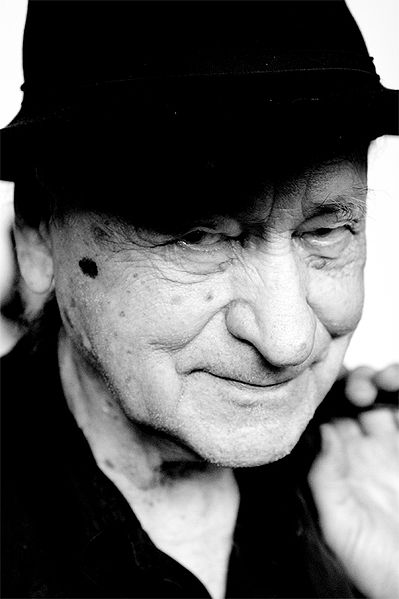The Life and Death of 9413: a Hollywood Extra
The Life and Death of 9413: a Hollywood Extra is a 1928 American silent experimental short film co-written and co-directed by Robert Florey and Slavko Vorkapić. Considered a landmark of American avant-garde cinema, it tells the story of a man who comes to Hollywood with dreams of becoming a star; he fails and becomes dehumanized, with studio executives reducing him to the role of an extra and writing the number "9413" on his forehead.
Title card from the film
Studio executives applaud Extra #15 (Voya George) as he holds paper masks in front of his face, symbolizing his performances.
Jules Raucourt played the protagonist, who is dehumanized after studio representatives make him a film extra and write the number 9413 on his forehead.
Scenes of Hollywood cityscapes (top) and of heaven at the end of the film (bottom) were achieved with miniature sets made from paper cubes, tin cans, cigar boxes, toy trains and an Erector Set.
Experimental film or avant-garde cinema is a mode of filmmaking that rigorously re-evaluates cinematic conventions and explores non-narrative forms or alternatives to traditional narratives or methods of working. Many experimental films, particularly early ones, relate to arts in other disciplines: painting, dance, literature and poetry, or arise from research and development of new technical resources.
Poster for The Great Blondino, a 1960s counterculture film directed by Robert Nelson and William T. Wiley
Lithuanian artist Jonas Mekas, regarded as godfather of American avant-garde cinema






